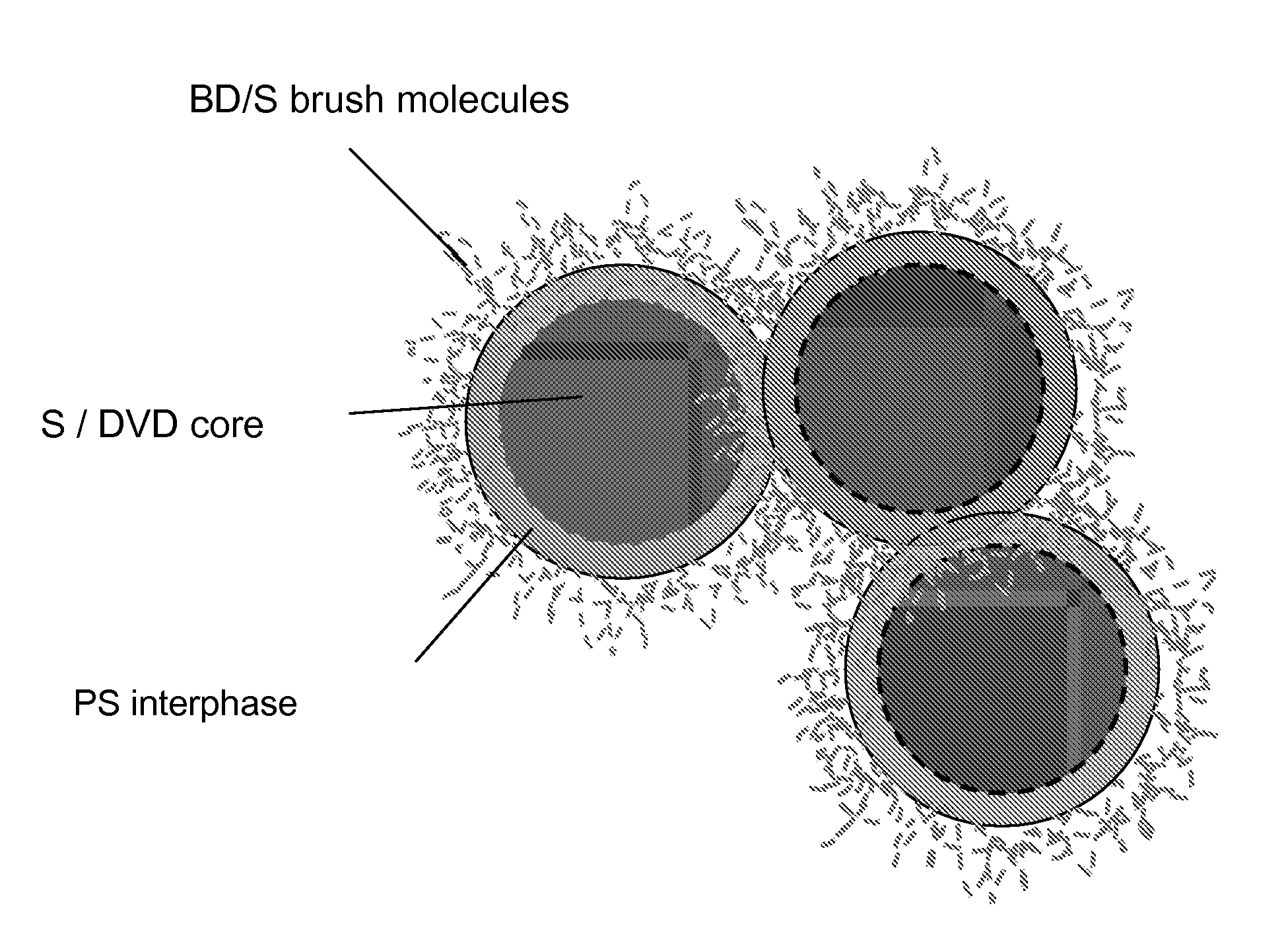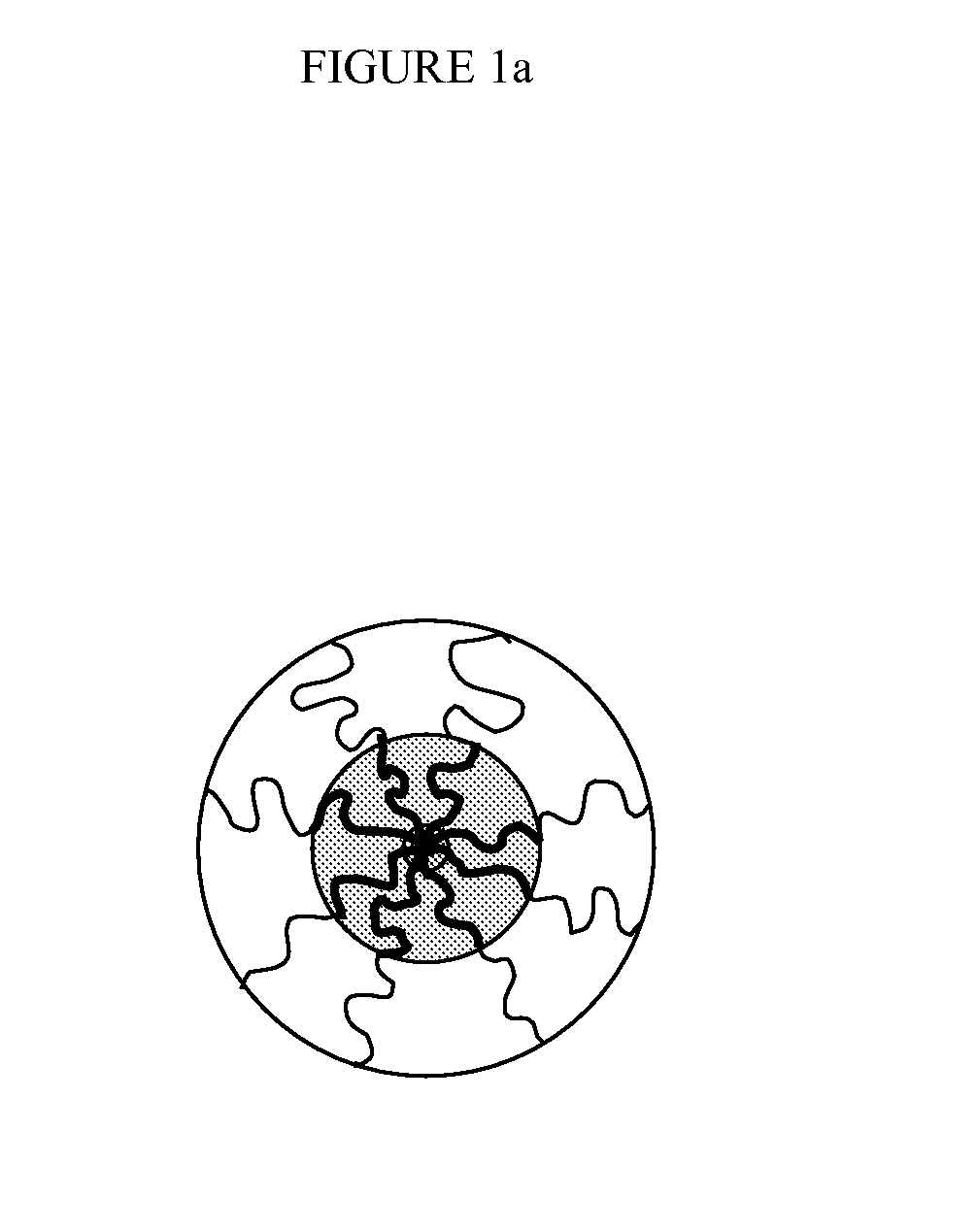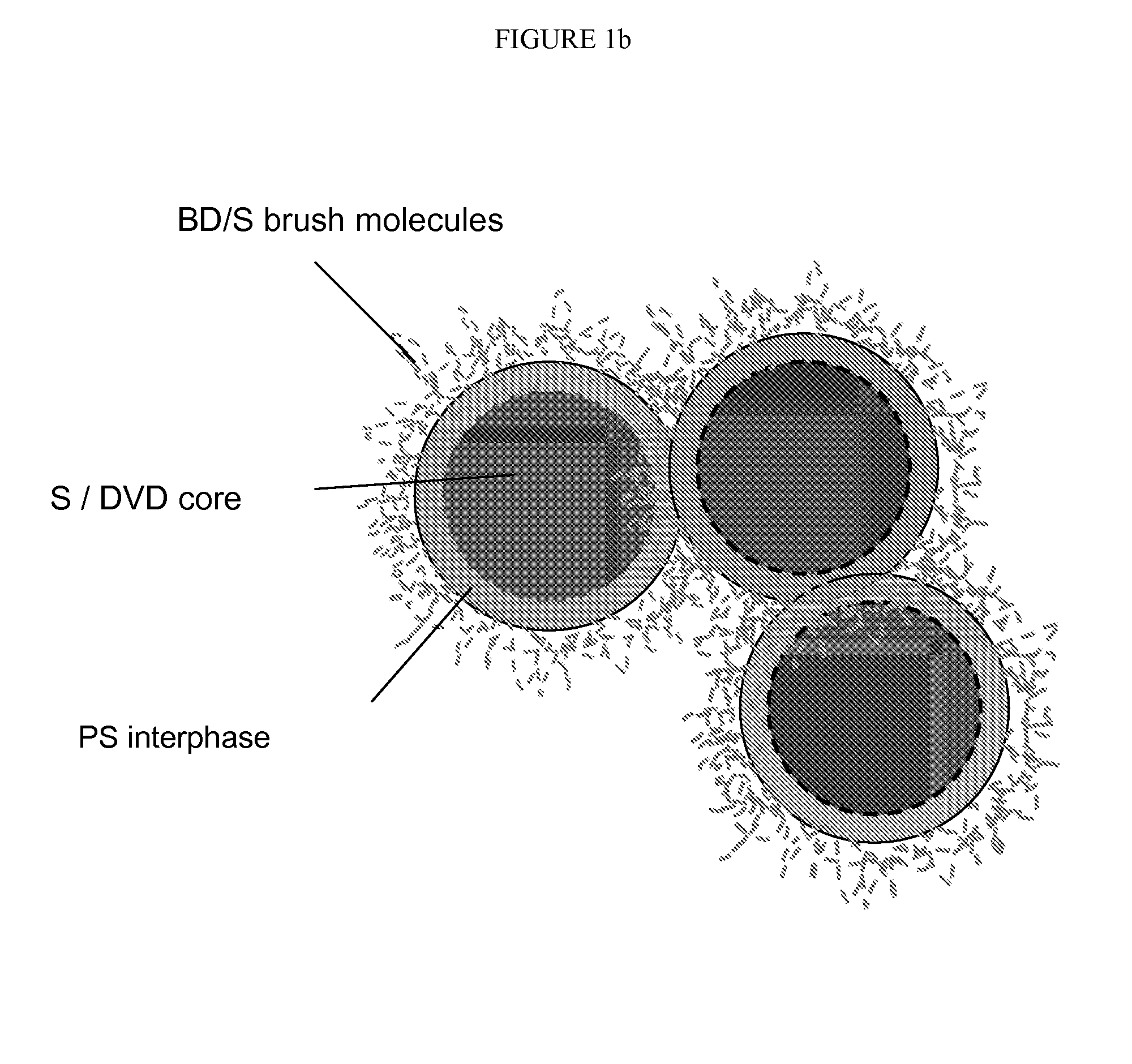Polymeric core-shell nanoparticles with interphase region
a nanoparticle and core-shell technology, applied in the field of polymeric nanoparticles, can solve the problems of surface characteristics and/or difficult internal composition of such nanoparticles, and achieve the effect of improving tensile strength and tear strength
- Summary
- Abstract
- Description
- Claims
- Application Information
AI Technical Summary
Benefits of technology
Problems solved by technology
Method used
Image
Examples
example one
[0094]This example produced polymeric nanoparticles with no interphase region, or a very sharp interphase region, thus not in accordance with the present invention. A two gallon reactor equipped with external jacket heating and internal agitation was used for solution polymerization. 1,3-Butadiene was used as a 22.2 weight percent solution in hexane. Styrene was used as a 33.0 weight percent solution in hexane. n-Butyl lithium was used as a 1.60 M solution in hexane. Technical grade DVB (80% as a mixture of isomers) was purchased from Aldrich and stored on alumina beads and calcium hydride. Neat OOPs was passed through a column of inhibitor remover under N2 before use and used as a 1.6 M solution in hexane, stored over calcium hydride. Hexane (solvent), isopropanol (to terminate live ends) and IRGANOX 1520 L (synthetic antioxidant, Ciba) were used as supplied.
[0095]The reactor was charged with a batch of 2.39 kilograms of hexane, 0.25 kilograms of styrene blend, and 1.23 kilograms o...
example two
[0100]This example produced polymeric nanoparticles with no interphase region, or a very sharp interphase region, thus not in accordance with the present invention. A one gallon polymerization reactor was used for solution polymerization, which was first charged with 1.18 kilograms of hexane, and then was charged with 0.56 kilograms of a butadiene / hexane blend containing 21.6 wt % of butadiene. That batch was then heated to 71.1° C. After the temperature stabilized, polymerization was initiated with 3.13 mL of a 1.6 M solution of butyl lithium in hexane. The batch temperature was maintained at 71.1° C. for the duration of the polymerization. After 45 minutes (when the reaction was finished), the reactor was charged with 0.34 kilograms of a styrene / hexane blend containing 33 wt % of styrene. After an additional 30 minutes of reaction, the reactor was charged with 25 mL of technical grade divinylbenzene (80% purity, Aldrich). The reactor was maintained at 71.1° C. for another 90 minut...
example three
[0101]Example Three prepared polymeric nanoparticles with an interphase region, in accordance with the present invention. A one gallon polymerization reactor was used for solution polymerization, which was first charged with 1.14 kilograms of hexane, then was charged with 0.59 kilograms of a butadiene / hexane blend containing 21.6 wt % of butadiene, and then was charged with 0.20 kilograms of a styrene / hexane blend containing 33 wt % of styrene. The batch was first set to 18.3° C., at which point 1.68 mL of a 1.6 M solution of butyl lithium in hexane was added to the reactor. It then took about 15 minutes for the temperature of the batch to reach 71.1° C. After that temperature rise, the batch temperature was maintained at 71.1° C. for 4.5 hours, by which time the reaction was finished. This process resulted in a tapered microstructure styrene / butadiene copolymer. The reactor was then cooled to 18.3° C., at which point the reactor was charged with 5.63 mL of a 1.6 M solution of butyl...
PUM
| Property | Measurement | Unit |
|---|---|---|
| mean average diameter | aaaaa | aaaaa |
| volume fraction | aaaaa | aaaaa |
| volume fraction | aaaaa | aaaaa |
Abstract
Description
Claims
Application Information
 Login to View More
Login to View More - R&D
- Intellectual Property
- Life Sciences
- Materials
- Tech Scout
- Unparalleled Data Quality
- Higher Quality Content
- 60% Fewer Hallucinations
Browse by: Latest US Patents, China's latest patents, Technical Efficacy Thesaurus, Application Domain, Technology Topic, Popular Technical Reports.
© 2025 PatSnap. All rights reserved.Legal|Privacy policy|Modern Slavery Act Transparency Statement|Sitemap|About US| Contact US: help@patsnap.com



